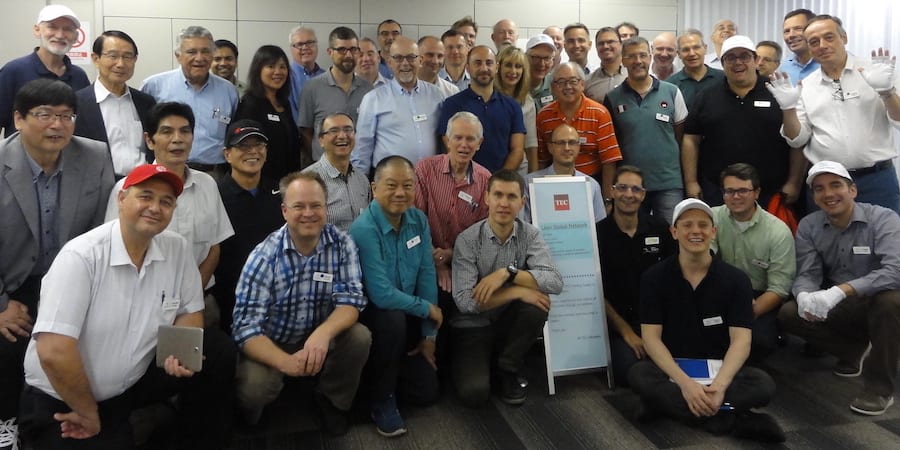
In the digital world customer service alone is not enough
FEATURE – As many retail giants are finding out, great customer service is no longer enough to ensure competitive advantage in a world where the digital revolution is taking no prisoners.
Words: Steve Bell and Karen Whitley Bell, co-founders, Lean IT Strategies
Photo credit: Robert Hoetink / Shutterstock.com
"Solid Customer Service is no longer enough for Publix as competition heats up," reads a recent headline in the Tampa Bay Times.
The article goes on to state that Publix, one of the 10 largest-volume supermarket chains in the United States, and the largest that is employee-owned, has spent "several decades luring and retaining customers based on its stellar record for customer service. But in 2016, it began making a more vested effort in innovative new programs to keep up with the growing number of tech-savvy competitors that are slowly chipping away at the company's stronghold."
Many business leaders recognize this threat and are beginning to make investments toward their digital transformation. Gartner, in their 2016 annual CEO survey, found that 1) half of the CEOs surveyed expect their industries to be substantially or unrecognizably transformed by digital, 2) three-quarters of CEOs expect those digital industry changes to bring higher profit margins, and 3) they expect 46% of customer-perceived value in their products to be digital by 2019. This makes intuitive sense if you're in a technology-centric industry like telecommunications or financial services, but what if you're not in a technology-centric industry?
If you dominate in your market, if you provide unrivaled customer service, if you think your industry – and your leading place within it – is immune to disruption, you might want to think again. The marketplace is changing, the digital frontier is uncharted territory, and the first signs of disruption appear differently (and often surprisingly) in each industry. What does it mean to be a "digital enterprise" and how does a traditional enterprise become one?
This question could consume an entire book, but let's try to break it down to its core using a disciplined problem solving approach. Let's start with the most classic lean question: what do customers value? Think Henry Ford and his statement about disruptive innovation, "If I had asked people what they wanted, they would have said faster horses." In the case of Publix, what customers really want is not a gallon of milk, chicken breasts, or laundry soap, at a good price. What they really want is to be able to, conveniently and economically, create nutritious, satisfying meals and meet basic consumer needs.
What elements of that value proposition can technology impact? In the grocery market, for example, the element of "convenience" would be a good place to start an inquiry. Does convenience mean different things for different types of products? To various customer personas? How might the technology-enabled convenience value proposition vary depending on the demographics of each store? And so on...
What elements of your value proposition can technology enhance, or even radically transform, in a way that will be meaningful to a diverse spectrum of customers?
Next, let's ask another lean thinker's question: where are we now, and what's keeping us from getting there? Put another way, what are our core competitive advantages, what strategic assets do we have (people, processes, products, brands, etc) and how do we utilize technology to leverage those strengths to continue to deliver market-differentiating customer experiences?
Let's learn more about Publix, and one of the many aspects of digitization to improve customer experience When we visit family in Florida, we shop at Publix, where we continuously encounter exceptional customer service. But two years ago, when a family member underwent shoulder surgery and couldn't drive for several weeks, we went online for a way to "conveniently and economically create nutritious, satisfying meals" for him. To our surprise, Publix didn't offer online shopping or grocery delivery.
Online grocery shopping isn't a new idea. We'd been able to grocery shop digitally from our home for many years. Several large grocery chains, including Publix, have been experimenting with online shopping for more than a decade. Despite such attention, however, Publix had yet to find a successful formula.
Enter Instacart: they're a lean startup that partners with brick-and-mortar grocers to provide online shopping and Uber-style grocery delivery. In July 2016, Publix launched an Instacart pilot in Miami, nearly two years after competitor Whole Foods' launch, also using Instacart. By the time Publix began their pilot, though, Whole Foods was already providing the digital shop-and-deliver experience in 25 major metropolitan regions. And recently, Whole Foods purchased an equity stake in Instacart. This raises the issue of a competitor's potential access to their data, which Publix must now contend with.
Back to the principle of using technology to leverage existing competitive advantages: Publix is known for consistent, exceptional personal service. One of the biggest impediments to online grocery shopping is the consumer concern that store employees will not pick good produce for them. What if Publix had successfully offered online grocery shopping earlier, leveraging its reputation and unique capabilities of its employee-owners? That's competitive advantage!
Instead, Publix is late to the digital grocery game, and is now playing catch-up in a market that addresses not only the online shopper, but the entire customer experience relationship. And now Amazon, too, is entering this market. Who would have thought that a local grocery store could be disrupted by Amazon? Remember bookstores? Though some are faster than others to adopt various approaches to digitization, no industry is immune.
As Burberry, Nordstrom, Publix, and other retail customer service giants demonstrate, traditional customer service is no longer enough. You need to think about your sources of competitive advantage, and begin experimenting with ways to leverage them on the digital frontier.
THE AUTHORS

Read more


WOMACK’S YOKOTEN – Last week, during a study mission in Japan, the Lean Global Network visited Toyota. Here, Jim shares his thoughts on what we saw and learned.


ROUND-UP – The Lean Global Network’s week in Japan in September was full of learning and inspiration. We asked five LGNers to share their biggest takeaways.


FEATURE – We spend a lot of time talking about innovation, but what is the actual impact of leveraging lean to achieve it? As the author points out, the potential is huge, provided certain conditions are met.


COLUMN – The author imagines an ideal, Jidoka-inspired response to the Coronavirus pandemic. This scenario might be utopian, but could it inform the definition of our True North?

